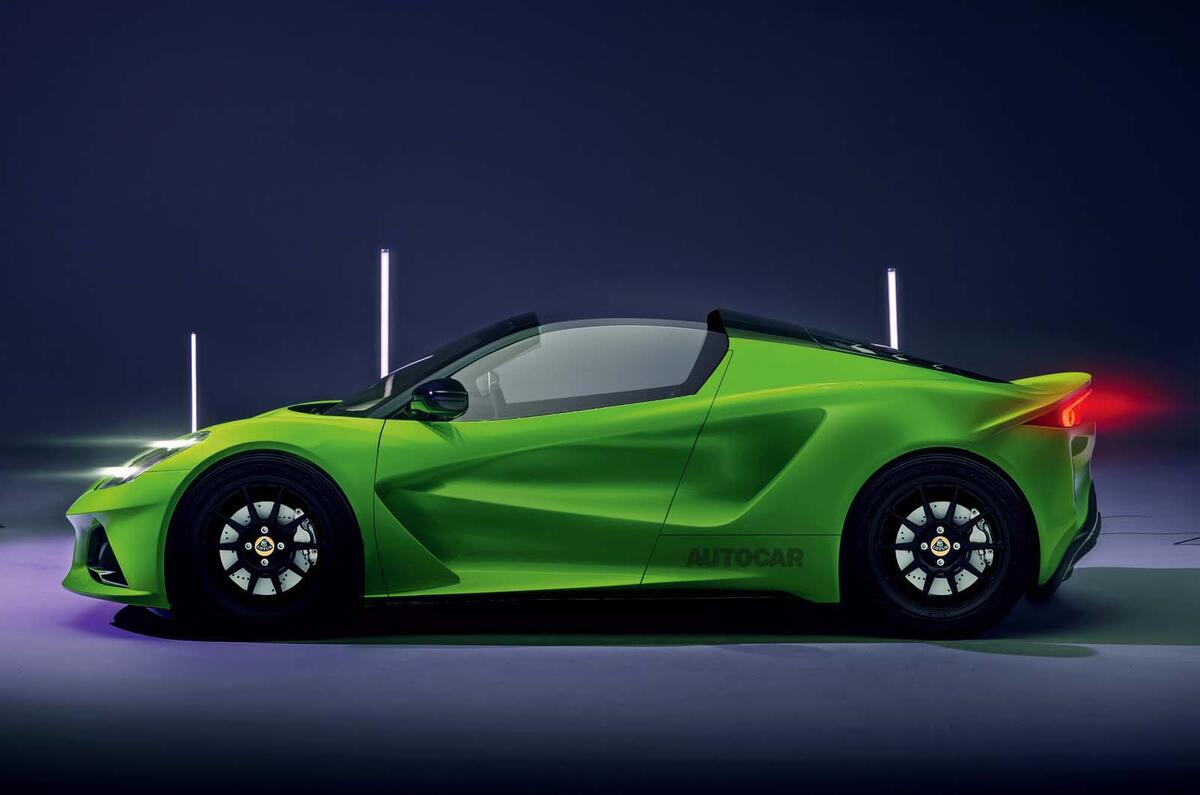Lotus could push back the launch of its long-awaited Type 135 electric sports car until smaller, lighter batteries become available, so it can be as close in spirit to the Elise as possible.
According to the most recent scheduling, the Type 135 was due on sale in 2027 at an estimated price of £75,000 as a replacement for the petrol-powered Emira.
While that is still the target, Lotus Group design boss Ben Payne has hinted it could be held back until next-generation EV technology comes on stream.
Payne said that launching the electric two-seater remains important because “the Elise is the go-to touchpoint for Lotus”. But the packaging constraints of current EV hardware would not allow the firm to stay true to the principles that defined the original car.
“The technology right now does not really allow you to recreate that product in a convincing way,” said Payne, referring to the generally taller silhouettes and higher kerb weights of today’s EVs that are a product of their underfloor batteries.
“The archetype of the moment is the larger, higher product, because you can very simplistically package the required technical elements into that size of vehicle more easily,” he continued.
Lotus’s first electric cars – the Emeya saloon and Eletre SUV – are significantly larger and heavier than any of its combustion-engined cars.
That makes it difficult, suggested Payne, for any sports car produced using the same hardware to ape the characteristics of the original Elise, which embodied the purist view of a British sports car. Payne added: “It’s fun to drive, super-engaging, very connected – just an utterly appealing driver’s product.” Lotus has previously revealed a dedicated lightweight architecture for future electric sports cars, beginning with the Type 135.
Dubbed ‘E-Sports’, it features a rear subframe structure that is said to be 37% lighter than that of the petrol-powered Emira and designed to allow the batteries to be stacked in the middle of the chassis.
That arrangement would allow an electric Lotus sports car to sit as close to the ground as the Elise and have its mass centralised for optimal dynamics. However, Payne suggested the advent of lighter, more compact battery technology would allow the firm to bring the car to fruition.
Asked whether solid-state batteries – which are far more energy dense and thus smaller and lighter than today’s conventional technologies – could facilitate the compact silhouette and low weight of a driver-focused sports car, Payne said: “They do. The physical size shrinking, and inevitably the mass coming down, allows you to go back to the core values. For a brand like Lotus, being able to reduce everything to the minimum and then shrinkwrap the car around it is the core philosophy of [founder Colin] Chapman.”









Join the debate
Add your comment
This is just an excuse. As others have pointed out, the original Tesla Roadster was based on an Elise and that is now a cult car with examples selling for over £100,000. Like all legacy car brands, Lotus need to stop making excuses and just get on with electrification. Otherwise customers will just buy Chinese electric sports cars like the MG instead.
I've got an ideal. Just build the new Elise with a regular engine. Small, light weight, fuel efficient and fun.
Isn't that what the customers are asking for?
Could it be that part of the reason for the decision to delay is very full order books for the profitable Emira, of which they can sell more than they can build? I ordered a manual V6 in March 2023 on a promise of 60 weeks delivery and the latest position I'm being told is I'll get it in 2026 if at all. They're currently only building the i4 (probably due to problems with supply of the V6 engines, depending which source of information is most believable). If the plan is to build the electric sports car at Hethel, rather than in China where the enormous current electric models are knocked out, there is some logic to carrying on building the Emira for longer before converting the factory to the new line, particularly if demand is going to be a bit uncertain when it goes on sale.
Toyota are replacing 100,000 V6 engines in the USA. That might be the source of the supply problem.
No word if current Emiras are affected or not.